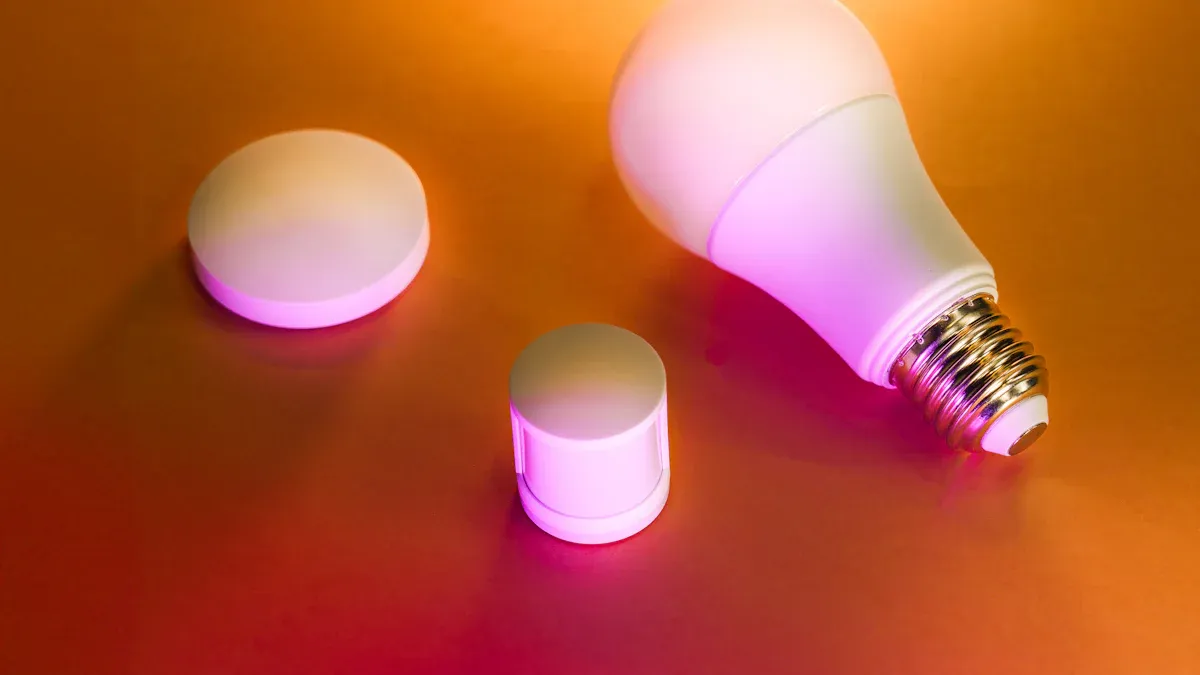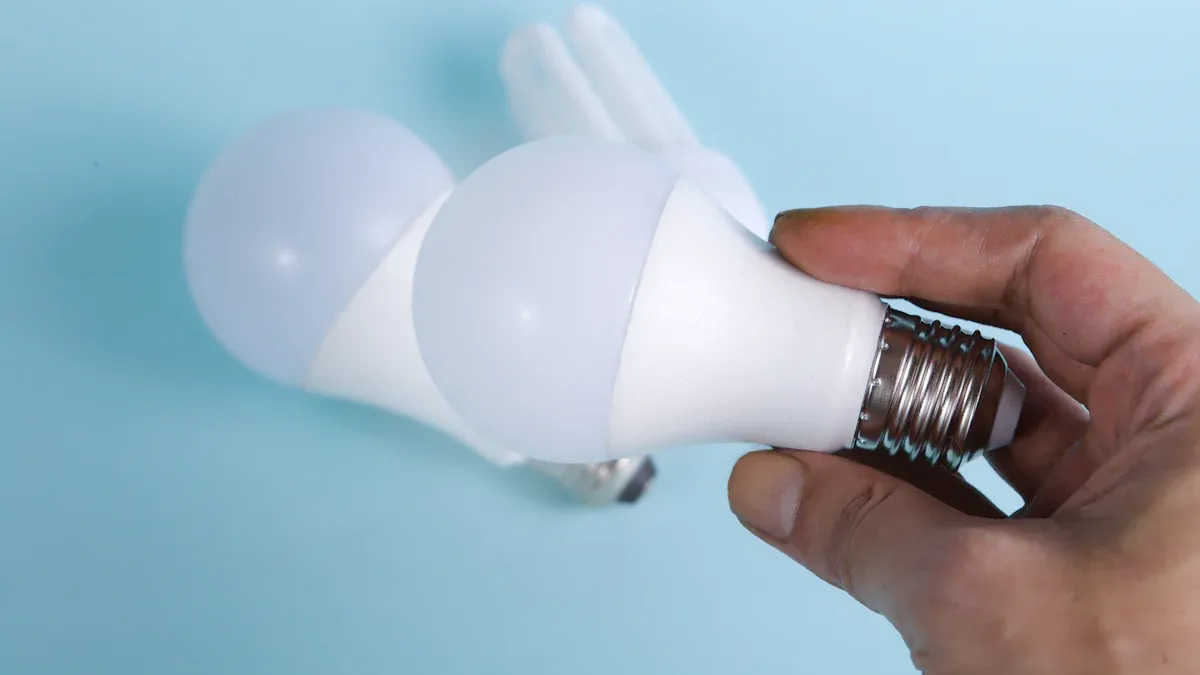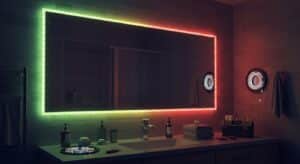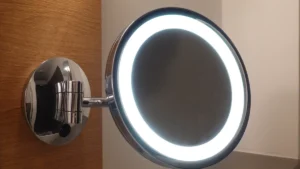
Switching to LED modules helps you save money in many ways, especially when considering the LED module price. They use up to 75% less power than old-style lights, which greatly cuts down your energy bills. By 2035, LED lights could save $630 billion each year in energy costs. They also last longer, so you spend less on replacements and repairs. Even though the LED module price may be higher at first, they save money over time. This makes them a smart choice for homes and businesses.
Key Takeaways
Using LED modules can cut energy bills by 80%. This saves money over time.
LED modules last much longer than regular bulbs. You won’t need to replace or fix them often.
LED modules may cost more at first. But they save money on energy and repairs later, making them worth it.
LED modules need less fixing, saving time and money.
Switching to LED lights can pay off in a few years. You’ll save a lot of money in the future.
Energy Efficiency Savings

Using less electricity with LED modules
LED modules use much less electricity than old-style lights. They turn more energy into light instead of heat. For example, LEDs can give over 100 lumens per watt (lm/W). Some advanced LEDs even go beyond 200 lm/W. Older lights, like incandescent bulbs, are far less efficient. This means you get bright, quality light while using less energy.
Switching to LED modules can cut energy use by up to 80%. This lowers your electricity bills and reduces your carbon footprint. Whether for homes or businesses, LED modules save money and help the environment.
Comparing LED modules and older lights
LED modules use much less energy than older lights. The table below shows the big difference:
Parameter | Bulb Light | LED Light |
|---|---|---|
Power Consumption (W) | 60 | 15 |
Luminous Efficacy (lm/W) | 12.5 | 93.3 |
LED bulbs need only 8-10 watts to match a 60-watt bulb’s brightness. This saves 70-80% energy. Over time, these savings grow, especially in homes or businesses with many lights. For example, replacing 10 old bulbs with LEDs and using them 5 hours daily saves about $52 yearly. This shows how LEDs provide both quick and long-term savings.
Saving money with lower energy bills
LED modules save money by using less electricity. For homes, this means extra cash for other needs. For businesses, the savings are even bigger, especially in large spaces with many lights.
For instance, LED SMD modules can cut energy use by up to 80%. This leads to big savings on electricity bills. Over time, these savings cover the higher LED module price. Whether for homes or businesses, the savings make LED modules a smart and affordable choice.
Longevity and Durability

Longer life of LED modules
LED modules last much longer than older lights. Incandescent bulbs work for about 2,500 hours. CFLs can last up to 10,000 hours. But LED modules can shine for 20,000 to 50,000 hours. This means fewer replacements, saving you time and money.
Lighting Type | Lifespan (Hours) |
|---|---|
Módulos LED | 20,000 – 50,000 |
Incandescent | 2,500 |
CFL | 10,000 |
Choosing LED modules gives you a long-lasting lighting option. They are great for homes and businesses. You won’t need to replace them often, which saves effort and cost.
Fewer changes because of durability
LED modules are strong and need fewer replacements. Many people have shared how reliable they are:
One person used 30 Ikea Tradfri bulbs for years, with only one breaking.
Another used 19 Cree bulbs for 13 years, with just one needing a change.
A buyer said LEDs are better now and last longer, reducing the trouble of replacing them.
These stories show how LED modules save money by lasting longer. Their tough design and smart technology make them a good choice for long-term use.
Saving money with fewer purchases
LED modules last long and are durable, saving you money. You won’t need to buy new ones often, cutting your costs. They also fit into your current fixtures, so no expensive upgrades are needed. Businesses save even more with lower maintenance costs.
Sometimes, LED lighting pays for itself quickly. For example, upgrading to LED modules can pay off in just four months. Over their 5-10 year lifespan, they save 80-90% energy compared to incandescent bulbs. Their efficiency and durability make the LED module price worth it for saving money over time.
Low Maintenance Costs
LED modules need little care
LED modules are easy to maintain compared to older lights. They last 30,000 to 50,000 hours, so replacements are rare. Incandescent bulbs only last about 1,000 hours. Compact fluorescents last 8,000 to 10,000 hours. LEDs save you from frequent changes and keep your lights working longer.
Why less maintenance is helpful:
Fewer bulb changes save time and energy.
Homes and businesses face fewer disruptions.
Spending on replacement parts is much lower.
Choosing LED modules gives you dependable lighting with little upkeep.
Lower costs for repairs and labor
Using LED modules cuts repair and labor costs. Older lights often need more fixing, which adds up. LEDs need fewer repairs and replacements, saving money. The table below shows how much you can save over 10 years by switching to LEDs:
Lighting Type | Yearly Electric Bill Savings | Total Savings in 10 Years |
|---|---|---|
Incandescent | $444 | $4,775 |
Fluorescent | $9,450 | $50,400 |
MH System (1) | $2,391 | $21,747 |
MH System (2) | $8,484 | $69,500 |
This proves that LEDs are a smart way to save money at home or work.
Time-saving and easy-to-use features
LED modules save time and make life easier. Many come with smart features for better control. You can adjust colors, set schedules, or use voice commands. The table below explains these benefits:
Feature Type | Details |
|---|---|
Smart Controls | Lets you change colors and set schedules easily. |
Voice Commands | Hands-free control that works with smart home systems. |
Energy-Saving Automation | Reduces wasted energy by up to 30% with smart settings. |
These features make your life simpler and your lighting system greener. While LEDs may cost more upfront, their benefits make them worth the price.
Upfront Cost vs. Long-Term Savings
Understanding the initial investment in LED modules
At first, LED module price may seem high. For example, an 8-foot LED shop light costs $100-$200. A fluorescent tube costs less, around $50-$100. This price difference might make you pause. But spending more on LEDs is worth it over time.
LEDs use less energy and last longer than old lights. This saves money on electricity and replacements. Some utility companies also give rebates for switching to LEDs. These rebates help lower the upfront cost, making LEDs a smart buy.
How long-term savings outweigh the upfront cost
LED modules save more money in the long run. Here’s how:
They use less energy, cutting electricity bills.
They last longer, so you replace them less often.
Maintenance costs are lower because LEDs are strong and reliable.
The Department of Energy says LED savings can cover their cost in 2-3 years. After that, you keep saving money. This makes LEDs a great choice for homes and businesses.
Tip: Upgrading a big space saves even more. Over time, lower energy and maintenance costs can save thousands of dollars.
Real-world examples of cost-effectiveness
Real-life examples show how LEDs save money. Imagine replacing warehouse fluorescent lights with LEDs. The upfront cost is higher, but energy and maintenance savings add up fast.
Here’s a comparison:
Lighting Type | Initial Cost (per unit) | Lifespan (hours) | Energy Savings | Payback Period |
|---|---|---|---|---|
Fluorescent Tubes | $50-$100 | 10,000 | Low | N/A |
Módulos LED | $100-$200 | 20,000-50,000 | High | 2-3 years |
One homeowner replaced 20 incandescent bulbs with LEDs. They saved $200 yearly on electricity. In five years, they saved $1,000, far more than the initial cost.
Switching to LEDs saves money and helps the planet. Their efficiency and durability make them a smart, eco-friendly choice.
Using LED modules is a great way to save money. They use less energy, last longer, and need little care. At first, LED modules may cost more, but they save on power and replacements. This makes them a smart choice for homes and businesses. By picking LEDs, you spend less and help the planet. Switch now and enjoy these benefits for many years!
FAQ
Why are LED modules better at saving energy?
LED modules turn most energy into light, not heat. Old lights waste energy as heat. LEDs use up to 80% less power. This lowers your electricity bills and saves money.
Are LED modules worth the higher starting price?
Yes, they are worth it. LEDs cost more at first but last longer. They also use less energy. Over time, you save on power and replacements. This makes them a smart and affordable choice.
How long do LED modules usually last?
LED modules last 20,000 to 50,000 hours. This is much longer than old bulbs, which last 2,500 hours, or CFLs, which last 10,000 hours. You won’t need to replace them often, saving time and money.
Do LED modules need special fixtures?
No, they don’t. Most LED modules fit regular fixtures. You won’t need to buy new ones. This makes switching to LEDs easy and budget-friendly for homes and businesses.
Can LED modules lower maintenance costs?
Yes, they can! LEDs are strong and last a long time. They need little care, saving you money on repairs and labor. They are great for places with many lights, cutting costs and reducing disruptions.
See Also
Improving Signage Illumination With LED Modules Effectively
The Advantages of Using LED Modules for Signage
Selecting The Perfect LED Light Module For Your Needs
Effortlessly Illuminate Your Signs With SUNLITE LED Modules
Key Tips For Selecting The Ideal LED Sign Module



